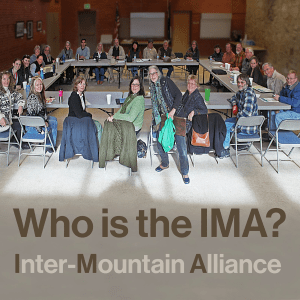Building Resilience by Learning from Past Disasters
- Kanmani Venkateswaran
- May 1, 2014
- 4 min read
Given the severity of the recent floods in Boulder, current conversation at the city and county levels is centered on flood mitigation. However, Boulder is subject to multiple climate hazards, including droughts, winds, and severe snow storms[1]. This broad spectrum of hazards has always been addressed in disaster planning and continues to be discussed post-flood, particularly by those thinking about broader resiliency.
A recent and particularly severe disaster was the Fourmile Fire in 2010. Between September 6 and September 16, the fire burned 6,200 acres of land and destroyed 169 homes[2] in the foothills above the city. After the fire, disaster mitigation and recovery policies and processes, particularly the Natural Hazard Mitigation Plan, were reviewed by the Office of Emergency Management[3] (OEM). Floods were an important part of these discussions; loss of vegetation in a burn area greatly exacerbates the chances of erosion, landslide, and flash flooding in the event of heavy rains.
Above: Fourmile Fire in the Foothills of Boulder on September 2010. (Photo: Bo Insogna)
Following the Fourmile Fire, a group of mountain community leaders came together and formed the Inter Mountain Alliance (IMA) as a platform to discuss the lessons learned, promote wildfire mitigation among residents, and encourage public participation in improving local disaster plans[4]. The following lessons learned were incorporated into the response and recovery process for the recent floods.
Lesson 1 – Spend time listening to communities to figure out what their needs are. In more traditional models of response and recovery, the needs of affected communities are assumed. After the fire, Boulder County staff spent time speaking to each community to determine what their needs were. Based on this experience, after the floods County staff and the Boulder County Long-Term Flood Recovery Group took the time to meet with community leaders to identify needs and how existing policies could be changed to meet needs.
Lesson 2 – Provide a single point of contact for those affected by disasters. In the aftermath of disasters, affected people need access to information and services that are provided by different departments. After the fire, Boulder County set up a Disaster Assistance Center within days as a one-stop shop for information. When the floods hit, this experience allowed City and County staff to set up flood Disaster Assistance Centers quickly, drawing in local non-profit organizations and FEMA – FEMA normally has to set these centers up on their own. The City of Boulder and Boulder County’s cooperation in this initiative has helped make these centers highly successful. Similar centers were set-up recently to help people with issues surrounding longer-term disaster recovery.
Lesson 3 – Form good relationships across departments, with police, sheriff, and local municipalities. Collaboration and partnerships are vital during disaster response and recovery as they build trust, promote learning and mainstream action. After the Fourmile Fire, the Office of Emergency Management and Boulder County realized that the 23 fire districts were too disparate and therefore worked to establish and solidify relationships with and between the fire districts. These districts worked together to produce a flood plan and have met regularly since to update it. Their collaboration during the floods, primarily search and rescue missions in the mountains, made overall flood response much more effective.
Above: Fourmile Canyon fire crew practicing a rescue mission during a flood training exercise. (Photo: Jeremy Papasso/Daily Camera)
Another salient collaboration is that of the IMA with Boulder County Amateur Radio Emergency Services (BCARES), http://bouldercountyares.org/, and the Office of Emergency Management (OEM) ,http://boulderoem.com/, to create the Mountain Emergency Radio Network (M.E.R.N), http://bouldermountainresources.org/mern/. M.E.R.N. is an amateur radio service that can be used to communicate with mountain residents during emergencies. Their partnership, alongside the Office of Emergency Management’s partnership with the National Weather Service, allowed for streamlined and rapid dissemination of early warning and safety information to mountain communities. Rumors and confusion were minimized.
Lesson 4 – Encourage innovation. The reverse-911 emergency phone-call system in use at the time of the Fourmile Fire was only able to send out messages in concentric circles. This was not appropriate given the geography of the mountain communities, which are laid out along canyons. After the Fourmile Fire, IMA, M.E.R.N. and the Office of Emergency Management worked together to adapt the 911 emergency phone-call system to the unique terrain of the canyons.
What is evident here is that disaster response and recovery systems that were implemented as a result of the Fourmile Fire were highly beneficial during the floods, and are likely to be beneficial in the event of future disasters, whether they are natural, social, or technological. Building resilience is not about adapting to floods or fires specifically; it is about adapting to hazards, change, and variability in general. Key to resilience is the ability to learn, so that communities do not repeat mistakes, but instead build back better each time.
1st Picture: Fourmile Fire in the Foothills of Boulder on September 2010. (Photo:Bo Insogna) https://www.flickr.com/photos/thelightningman/4968418101/in/photolist-8z3rB4-8yXhox-8zU4Fv-8zvy1j-acmLLe-8z1GEj-8z7ZRt-8yXDTM-8yXCQZ-8yXERM-8z1GPy-8z819k-8z1KpY- 8yXAk2-8yXD6F-8z7ZZc-8z1LTW-8z1KL1-8yXBwH-8z1LwC-8z1L7b-8yXEFM-8z1Ln9-8yXB5D-8yXC2c-8yXDzc-8z1Gw5-8yRD8b-8z1U5p-8BnnTX-8BqobJ-8BqomE-8z4n2i-8BngA4-8Bqo2A-8BngvT-8Bqo7w-8z4iR4-8Bbbc9-8z8eP3-8AfZtC-8zsnse-8yN17U-8z4j6P-acpATb-8z1q7s-8yXeXz-8zimWk-8zijBx-8zmvf9
2nd Picture: http://2.bp.blogspot.com/-fQPPwO-Cg3s/UuRCN95WktI/AAAAAAAABGs/X3wMMa_azT8/s1600/InterMountain+Alliance.jpg
3rd Picture: Fourmile Canyon fire crew practicing a rescue mission during a flood training exercise. (Photo: Jeremy Papasso/Daily Camera) http://extras.mnginteractive.com/live/media/site21/2011/0416/20110416__17dcaflow~1_500.jpg
[1] (http://boulderoem.com/files/Boulder_MHMP_Draft_for_Social_Media.pdf
[2] (http://www.dailycamera.com/ci_21449075/boulder-county-passes-lessons-fourmile-fire)
[3] (http://boulderoem.com/files/Boulder_MHMP_Draft_for_Social_Media.pdf
[4] http://bouldermountainresources.org/intermountainalliance-group/























Comments